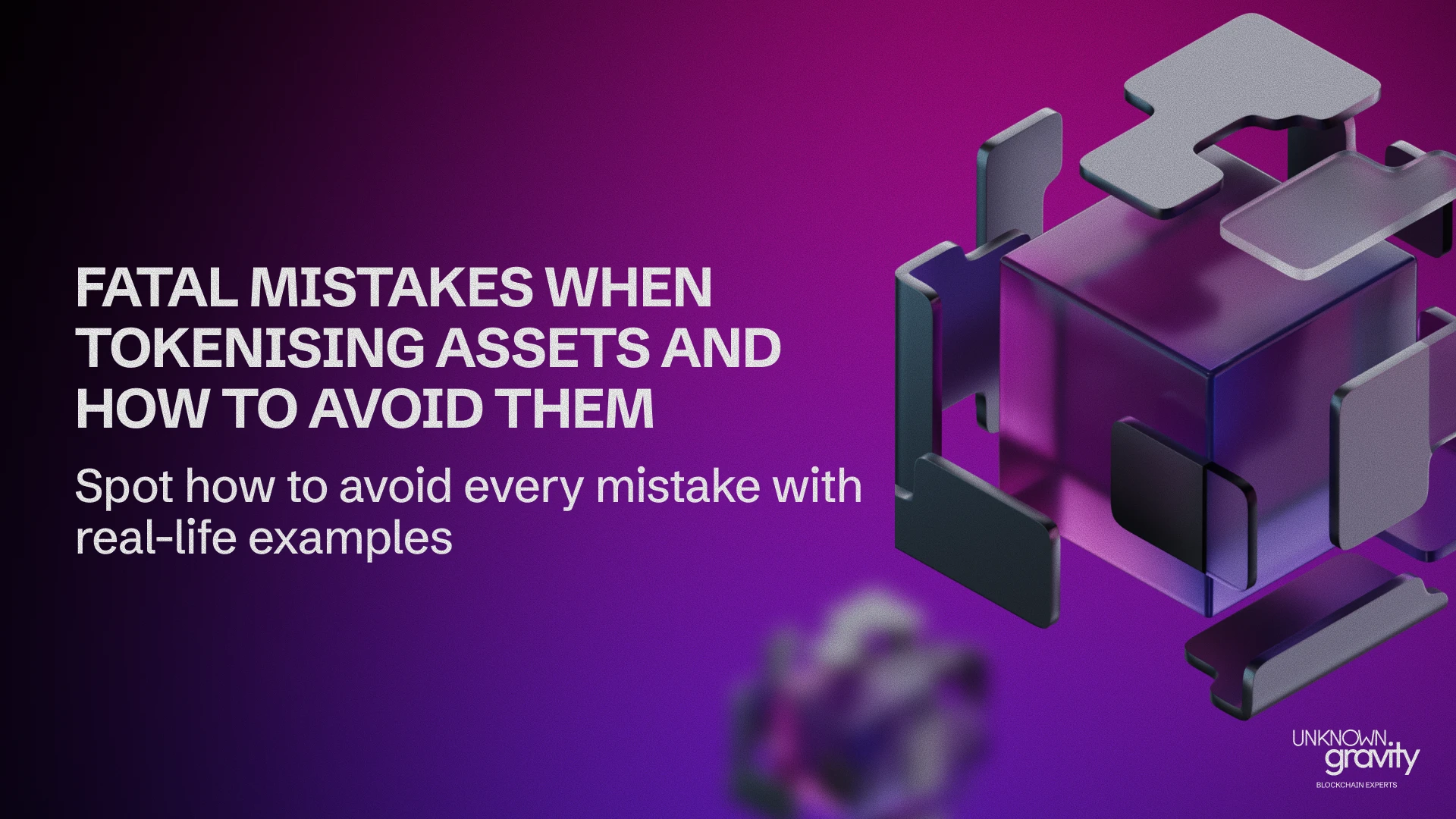Asset tokenization promises a revolution in the way we invest, access liquidity or distribute value.
However, like any innovation, its practical application is full of challenges.
Many projects fail or end up facing legal, technical or market problems due to errors that could have been avoided with good planning.
In this article, we identify the most serious mistakes made when tokenizing assets and offer practical and realistic solutions to avoid them from the start.
1. Don't analyze the asset's legal fit before tokenizing
One of the most serious mistakes is to assume that any asset can be tokenized without legal restrictions. This is false.
Many assets are subject to specific regulatory frameworks (securities, real estate, debt, intellectual property, etc.) and their tokenization It does not eliminate those obligations.
In Europe, the MiCA Regulation excludes traditional financial assets, which remain under MiFID II and other laws.
Real example
In 2023, several tokenized real estate projects in the U.S. The U.S. received warnings for issuing tokens considered securities without an SEC license.
How to avoid it
- Do a prior legal analysis of the type of asset and its regulatory framework.
- Consult with lawyers specialized in fintech and capital markets.
- Validate whether the token meets security, custody, notification, or brokerage requirements.
2. Not correctly defining what the token represents
It's common to see projects that tokenize an asset without specifying precisely what each token represents: a fraction of ownership? An Economic Right? a profit sharing?
Ambiguity creates legal uncertainty and scares off institutional investors.
Practical solution
- Drafting a Termsheet clear: define if the token represents equity, debt, right of use, dividend, etc.
- It includes this definition in the whitepaper, smart contract, and legal documentation.
- If applicable, use recognized contractual models (for example, SAFT Or Token Term Agreements).
3. Choosing blockchain regardless of your security and reputation
Many projects opt for poorly audited blockchains, without sufficient decentralization or with a low volume of transactions, just to avoid high fees or because of technical ease.
This can result in:
- Inability to list tokens on serious exchanges.
- Unexpected security risks or forks.
- Loss of trust on the part of users and investors.
Practical solution
- Choose a network with proven security, good documentation, and an active community.
- Validate whether it meets the requirements of the regulators or guardians with whom it will operate.
- Bet on compatibility with common standards (for example, ERC-20, ERC-3643, ERC-1155).
4. Not complying with KYC/AML regulations from the start
Tokenizing an asset and allowing it to be purchased and sold without identity verification can constitute a direct violation of money laundering (AML) and terrorist financing (CFT) laws.
This error can lead to penalties, loss of licenses, or even closure of operations.
How to avoid it
- Implement KYC systems from the start (even if the token is not yet marketed).
- Record activity in jurisdictions with regulatory clarity.
- Use decentralized identity solutions (Self Sovereign Identity) to balance compliance and privacy.
5. Not considering legal and technical maintenance costs
The issuance of a token is not a one-off act. It requires legal maintenance (compliance, reports, notifications), as well as technical maintenance (support, updates, oracles, integrations).
Typical problems
- Projects that disappear after issuance due to lack of operating budget.
- Tokens that become obsolete or unusable because they don't adapt to new standards or network updates.
Practical solution
- It includes an operating budget for at least 2-3 years after the issue.
- Delegate the technical part to companies specialized in smart contract maintenance.
- Use modular and upgradable contracts (proxies, upgradability patterns).
6. Tokenizing Without a Clear Liquidity Plan
One of the main attractions of tokenization is to improve the liquidity of traditionally illiquid assets.
However, this It doesn't happen automatically. Many tokens are stuck with no secondary market or repurchase option.
Example
In 2022, several art tokenization projects failed to list their tokens on recognized platforms, leaving investors with no option to exit.
How to avoid it
- Design a liquidity strategy from the start: platforms where they will be traded, agreements with AMMs, repurchase of tokens, etc.
- Evaluate whether it is feasible to create a regulated secondary market, or to adhere to an existing one (such as on platforms licensed by MTF or DLT pilot regime).
- If there will be no immediate liquidity, report it clearly and honestly.
7. Promising returns with no legal or economic basis
The promise of high and automatic returns is one of the biggest mistakes (and sources of legal problems).
In many countries, promising future benefits automatically converts the token into regulated security.
Practical solution
- Never promise returns if you are not authorized to issue securities.
- Use alternative models such as real utility tokens, revenue-sharing tokens with a legal basis or stable yield tokens in regulated DeFi markets.
- Clearly separate marketing from legal content.
Conclusion
Tokenizing assets is a powerful tool for modernizing investment, improving liquidity and opening up new business models.
But doing it wrong can have very serious legal, reputational and operational consequences.
Avoiding these mistakes does not require large investments, but rather planning, appropriate advice and a professional approach right from the start.
In an environment where trust and security are key, those who do things right will not only avoid sanctions, but will be better positioned to lead the future of tokenization.
Are you considering tokenizing assets?
From Unknown Gravity we help companies to develop their tokenization projects in compliance with all technical and legal requirements.
Request an initial consultation without obligation.
















.webp)
.webp)





































.png)
.webp)
.webp)
.webp)
.webp)
.webp)
.webp)
.webp)
.webp)
.webp)
%20(1).webp)
.webp)
.webp)
.webp)

.png)
.png)
.png)



